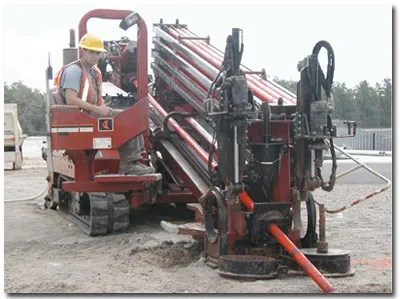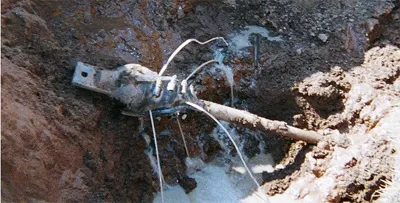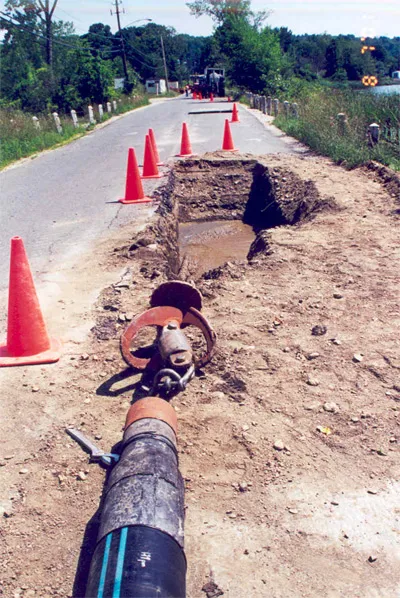The first stage of a successful Horizontal Directional Drilling Process is drilling a pilot hole. A pilot hole is horizontally drilled and continues under and across the obstacle along a predetermined design path. An electronic transmitter is placed in a housing which is directly behind the directional drilling cutting head. The transmitter sends a signal to the surface which is read by the receiver, which then transmits the information back to the directional drill rig operator. The directional driller then, by using the relayed information, can steer the bore path in any desired direction.
Once the pilot hole has been completed, the borehole must be enlarged to a suitable diameter for the product pipeline. This is accomplished in the second stage of the Horizontal Directional Drilling Process by “prereaming” the horizontal boring to successively larger diameters. Generally, the reamer is attached to the drill string on the opposite end of the borehole from the drill and pulled back into the pilot hole. Slurry is pumped into the directionally drilled borehole to maintain the integrity of the hole and to flush out cuttings.
Once the directionally drilled hole is enlarged, the conduit can be pulled through it. The pipeline is prefabricated at the end of the bore opposite the drill rig. A reamer is attached to the drill string, and then connected to the product by a pulling head and swivel. The swivel allows for the reamer to turn without the product turning. The directional drilling rig then begins the pullback operation, rotating and pulling on the drill string as well as circulating drilling fluids. The pullback continues until the reamer exits the bore path by the directional drill rig and the pipeline is in place.
If the horizontally bored conduit is to carry power lines, fiber optic cable, or some other product, an aircraft cable is inserted into the pipe prior to pulling into position. After the pipe installation, the directional drill rig is used to pull the product into position within the pipe. This final step in the Horizontal Directional Drilling Process includes pressure testing to ensure the integrity of the pipe. For more information on the process, watch this directional drilling animation.

Directionally drilling the pilot hole

Directional drilling pre-ream

Directional drilling pull back
77 N. Plains Industrial Road
Wallingford, CT 06492
Over 5,000 Horizontal Remediation Wells Installed Worldwide
NAICS Codes: 237990 Heavy Equipment & Horizontal Drilling • 237110 Water & Sewer Line and Related • 541620 Environmental Consulting Services for HRW Screen Design • 237130 Underground Cable Lying & Utility Line Construction
Copyright 2025 Directional Technologies, Inc. All Rights Reserved.